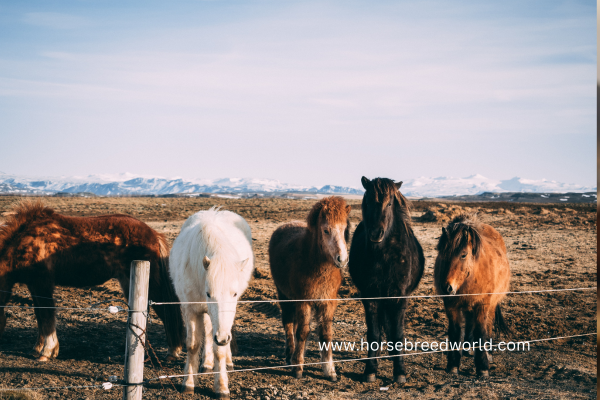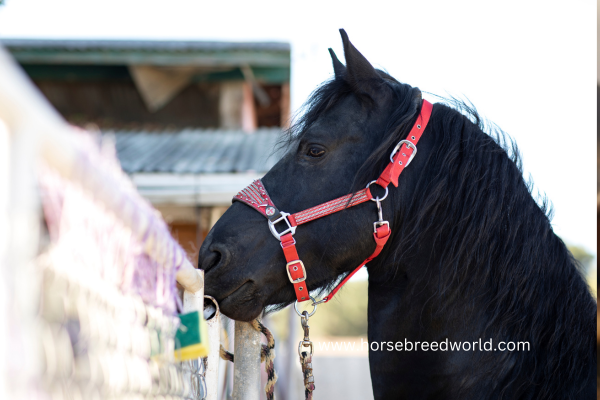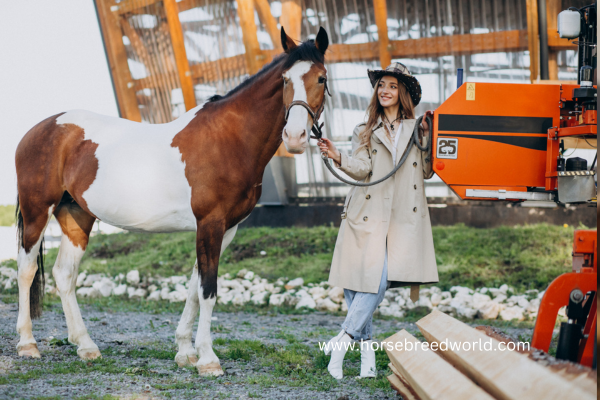Introduction
Horse breeding is an exciting and rewarding journey, whether you’re looking to raise racing champions, gentle companions, or working horses. But it’s not just about letting nature take its course; successful breeding requires preparation, care, and a bit of know-how.
Table of Contents
ToggleThese top 10 tips will guide you step-by-step through the process, from selecting the right horses to caring for your new foal. Let’s saddle up and dive in!
Start with the Right Horse Breed
Choosing the right breed is one of the first and most critical steps in horse breeding. Not all horses are bred for the same purpose, so understanding your goals will help you pick the perfect breed. Are you dreaming of racehorses? Thoroughbreds are your best bet. Looking for sturdy workhorses? Draft breeds like Clydesdales or Shires will do the trick.
When selecting a breed, consider:
- Purpose: Racing, work, showing, or companionship.
- Temperament: Certain breeds, like Quarter Horses, are known for their calm and friendly nature, while others, like Arabians, are spirited and energetic.
- Adaptability: Climate and terrain matter!
A common beginner mistake is focusing solely on looks. Sure, Friesians are gorgeous with their flowing manes, but if you’re after endurance for long rides, they might not be ideal. One breeder I know chose a sleek Arabian stallion for his looks alone, only to realize his mare had trouble keeping up with his energy!
Take your time, do research, and talk to experienced breeders to find a breed that suits your vision. After all, starting strong sets the stage for success.
Understand Your Mare’s Health and Cycle
Healthy mares make healthy foals, and knowing your mare’s reproductive cycle is key to successful breeding. The estrous cycle in mares lasts about 21 days, with the fertile window (estrus) typically lasting 5-7 days. Breeding during this window gives you the best chance for conception.
Here’s how to monitor your mare’s readiness:
- Behavioral Changes: During estrus, mares often become friendlier, show tail-raising behavior, or “wink” (contract their vulva).
- Veterinary Checks: A veterinarian can perform ultrasounds to pinpoint the exact days of ovulation.
Health is equally crucial. Before breeding, ensure your mare is:
- In Good Body Condition: Neither too thin nor too overweight.
- Up-to-Date on Vaccinations: This protects both the mare and the unborn foal.
- Free of Reproductive Issues: Your vet can screen for any infections or abnormalities.
One friend learned this the hard way when their mare didn’t conceive after months of attempts. It turned out she had a nutritional deficiency affecting her cycle. A quick change in diet made all the difference, and a healthy foal arrived the following spring!
Bottom line? Keep your mare healthy and understand her cycle—it’s the foundation of successful horse breeding.

Select a Quality Stallion
Choosing the right stallion is as important as selecting the mare. The stallion’s genetics, health, and temperament will impact the foal’s traits, so this decision shouldn’t be rushed.
What to Look for in a Stallion:
- Proven Genetics: A stallion with a track record of strong, healthy offspring is a safer bet.
- Health: Ensure the stallion is free from genetic diseases, injuries, or reproductive issues.
- Temperament: A well-behaved stallion often passes on calm traits to foals.
Don’t just rely on photos or show records. Visit the stallion in person, observe his behavior, and talk to other breeders about his history.
I recall one breeder who picked a flashy stallion based on awards alone but later regretted it when the foal inherited the stallion’s aggressive tendencies. A balance of beauty and behavior is key!
Also, consider how the stallion complements your mare. For instance, if your mare is smaller, pairing her with a massive draft horse might cause foaling complications. Select a match that enhances your breeding goals.
Nutrition: Feed for Breeding Success
Feeding your horses correctly during breeding season can make a world of difference. Nutrition affects fertility, pregnancy, and the health of both mare and foal.
Feeding the Mare Before Breeding:
- Focus on a diet rich in protein, vitamins, and minerals.
- Ensure she has access to high-quality hay and a balanced grain mix.
During Pregnancy:
- As the pregnancy progresses, increase caloric intake to meet her growing needs.
- Provide supplements like calcium and vitamin E to support fetal development.
Don’t forget hydration! Pregnant mares need plenty of clean, fresh water.
I once heard a funny story about a mare who refused to eat anything except apples during her pregnancy—talk about picky eating! While that’s not ideal, it highlights the importance of monitoring your horse’s appetite and adjusting accordingly.
Prepare a Safe and Comfortable Breeding Environment
Creating a stress-free environment is vital for successful breeding. Horses are sensitive animals, and a chaotic setting can affect fertility and behavior.
Key Steps to Prepare:
- Secure Fencing: Ensure pastures are escape-proof and safe for both horses.
- Clean Stalls: Keep the area spotless to avoid infections.
- Quiet Atmosphere: Limit distractions and loud noises.
A breeder I know swears by playing soft classical music during breeding season. While the science is debatable, his horses seemed relaxed, and his success rate spoke for itself!
Make sure your environment is free from hazards, and provide plenty of room for natural movement. This will keep your horses calm and happy.

Monitor the Breeding Process
Once your mare and stallion are introduced, closely monitoring the breeding process ensures everything goes smoothly. Horse breeding typically happens through two main methods: natural cover or artificial insemination.
- Natural Cover: This involves live mating, where the stallion mounts the mare. While natural, it requires careful supervision to prevent injuries, especially if the horses are unfamiliar with each other. Always work with experienced handlers.
- Artificial Insemination (AI): AI has grown in popularity as it’s safer and more controlled. Semen is collected and inserted into the mare’s reproductive tract at the optimal time during her estrous cycle.
No matter the method, patience is key. Sometimes, mares may require multiple attempts to conceive. I remember a breeder who swore his mare would never get pregnant. By the fourth cycle—and with some vet-assisted timing—she conceived and delivered a beautiful foal.
Keep close records of the process, including dates and observations. This information will be invaluable for both breeders and veterinarians if complications arise.
Work with a Trusted Veterinarian
A knowledgeable veterinarian is your best partner in the horse breeding process. Their expertise ensures both mare and foal remain healthy and helps you navigate any bumps along the way.
What Your Vet Will Do:
- Pre-Breeding Check-Ups: Screen for infections, overall health, and fitness for pregnancy.
- Ultrasound Scans: Monitor ovulation and confirm pregnancy.
- Ongoing Care: Track the mare’s progress and address any concerns.
During pregnancy, regular check-ups are critical to detect potential problems early. For instance, a mare might show signs of discomfort or unusual lethargy—these could indicate issues like colic or nutritional deficiencies.
A good vet is also a great source of advice. A breeder friend of mine once panicked over his mare’s unusual appetite late in her pregnancy. The vet reassured him it was normal as her energy needs increased. Sure enough, a healthy foal followed.
Don’t wait for problems to appear—proactive veterinary care saves time, stress, and money in the long run.
Ensure Proper Care During Pregnancy
Pregnancy is a delicate time for your mare, and her care routine must adapt to meet her changing needs. The average horse pregnancy lasts 11 months, so it’s a long journey.
Key Areas of Focus:
- Nutrition: Gradually increase feed as pregnancy progresses, and provide supplements as needed.
- Exercise: Light exercise is great for pregnant mares, keeping them fit and reducing stress. Avoid overly strenuous activities, though.
- Comfort: Provide a clean, spacious stall or pasture where the mare feels safe.
One breeder shared how his mare loved having a designated “quiet spot” in the pasture during her final trimester. This helped her relax and reduced any unnecessary stress from other horses.
Keep an eye out for unusual behavior, like restlessness or reduced appetite, and consult your vet if anything seems off. A well-cared-for mare will deliver a healthy, happy foal when the time comes.

Prepare for Foaling
As the due date approaches, preparation is key to ensuring a smooth delivery. While most mares give birth without intervention, you’ll want to be ready for anything.
Signs Foaling Is Near:
- Swelling of the udders (“bagging up”)
- Relaxation of pelvic ligaments
- Restlessness or pawing at the ground
Set up a clean, quiet foaling area with plenty of bedding. Keep your vet’s number on hand in case of emergencies, but trust your mare’s instincts—nature often handles things perfectly.
One breeder I know set up a small camera to monitor his mare from home. He woke up at 2 a.m. to find her quietly delivering a foal without any fuss! It’s always an unforgettable moment when a new life enters the world.
Care for the Newborn Foal
Congratulations! Your foal has arrived, but now the real work begins.
What to Look For:
- Standing and Nursing: Foals should attempt to stand within an hour and nurse soon after. The first milk, or colostrum, is rich in antibodies that protect the foal.
- Health Checks: Have your vet check for birth injuries or infections.
- Bonding: Allow the mare and foal time to bond naturally.
Make sure the foal has access to a clean, safe space for resting and exploration. Over the first few weeks, monitor their growth, feed, and behavior closely.
One breeder I know fondly remembers her foal chasing her around the field at just two weeks old—full of energy and personality! Moments like these make the hard work of horse breeding so worth it.
Conclusion
Horse breeding is a challenging but incredibly rewarding experience. By following these top 10 tips, you’ll be well on your way to raising healthy, happy horses, whether for sport, work, or companionship.
Remember, preparation, care, and a bit of patience go a long way. From selecting the right breed to caring for a newborn foal, each step brings you closer to achieving your breeding goals.
If you loved this guide, be sure to check out more tips and articles on our blog at www.catspersonality.com. Happy breeding, and may your journey be filled with strong, beautiful horses!



Pingback: Top 4 most dangerous horse breeds - horsebreedworld.com